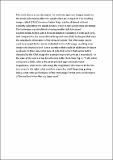http://hdl.handle.net/10261/131503
 SHARE
BASE SHARE
BASE
|
|
| Visualizar otros formatos: MARC | Dublin Core | RDF | ORE | MODS | METS | DIDL | DATACITE | |

| Campo DC | Valor | Lengua/Idioma |
|---|---|---|
| dc.contributor.author | Higuti, Ricardo Tokio | - |
| dc.date.accessioned | 2016-04-27T19:40:54Z | - |
| dc.date.available | 2016-04-27T19:40:54Z | - |
| dc.date.issued | 2016-04-27 | * |
| dc.identifier.uri | http://hdl.handle.net/10261/131503 | - |
| dc.language.iso | eng | es_ES |
| dc.rights | openAccess | es_ES |
| dc.title | A New Beamforming Process Based on the Phase Dispersion Analysis [Review] | * |
| dc.type | revisión | es_ES |
| dc.rights.license | http://creativecommons.org/licenses/by/4.0/ | es_ES |
| dc.relation.isrelatedtoItem | http://hdl.handle.net/10261/44699 | * |
| dc.description.affiliation | UNESP | es_ES |
| oprm.eje1.value | 1 | es_ES |
| oprm.eje2.value | No aplicable | es_ES |
| oprm.eje3.value | No aplicable | es_ES |
| oprm.eje4.value | No aplicable | es_ES |
| oprm.revision | The work shows a new descriptor for synthetic aperture images, based on the phase information after the signal delays are computed. The resulting image, called CFM (Coherence Factor Map) can be obtained without explicitly calculating the signals phases, which means a numerical advantage. The technique was simulated (showing smaller side lobes) and experimentally tested with a medical phantom consisting of cysts and wires, and compared to the conventional delay-and-sum (DAS) technique that uses the amplitude information of the delayed signals. The CFM image can be used as a weight factor and is multiplied by the DAS image. resulting in an image with improved SNR. Some questions that could be addressed in future works are: Is there any other type of defect/structure that can be better detected by the CFM image (for example improved contrast / resolution) - in the case of the wires, it can be noticed a better detection (Fig. 2, ~5 dB, when compared to DAS), where the peaks present approximately equal magnitudes, while in the DAS image the magnitudes decreases a bit for the two wires to the right- what could be reason for that? Regarding grating lobes, what is the performance of the CFM image? What is the performance of the method when there is dispersion? | es_ES |
| oprm.reputacion | 50 | * |
| oprm.clasificacion | 90 | es_ES |
| item.openairetype | revisión | - |
| item.grantfulltext | open | - |
| item.cerifentitytype | Publications | - |
| item.openairecristype | http://purl.org/coar/resource_type/c_18cf | - |
| item.fulltext | With Fulltext | - |
| item.languageiso639-1 | en | - |
| Aparece en las colecciones: | OPRM: Open Peer Reviews | |
Ficheros en este ítem:
| Fichero | Descripción | Tamaño | Formato | |
|---|---|---|---|---|
| Higuti_review_Graullera.pdf | 91,46 kB | Adobe PDF |  Visualizar/Abrir |

La calificación de la revisión es la valoración global del trabajo revisado. La valoración de los demás criterios de evaluación se muestra en metadatos específicos. La reputación del trabajo revisado se calcula a partir de las calificaciones de las revisiones individuales y de la reputación de cada revisión. Si la reputación del trabajo revisado es inferior a 30 (sobre 100) se representa con un símbolo rojo; entre 30 y 60 aparece en amarillo y si es superior a 60 se representa con un símbolo verde. Si la reputación aún no está disponible el símbolo es gris.
Los autores del trabajo revisado también pueden valorar las revisiones recibidas. La reputación de una revisión se calcula a partir de las valoraciones de los autores. Más en Preguntas frecuentes.
Page view(s)
301Download(s)
96Google ScholarTM
Check
Este item está licenciado bajo una Licencia Creative Commons

